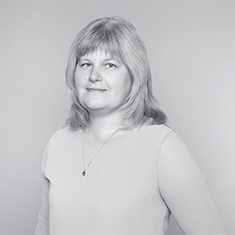- Consultations 3
-
Operations and procedures 12
- Cervical conization
- Colposcopy
- Endometrial abrasion and biopsy
- Laparoscopic surgeries of the uterus
- Placement and removal of a subcutaneous contraceptive implant
- Placement of an intrauterine contraceptive device or IUD
- Removal of Bartholin's cyst from the genital area
- Surgical abortion or surgical termination of pregnancy
- Urethral fixation in case of urinary incontinence
- Uterine Cavity Examination and Surgical Treatment, or Ambulatory Hysteroscopy
- Vaginal laser therapy
- Vaginal reconstruction/ vaginoplasty
Uterine Cavity Examination and Surgical Treatment, or Ambulatory Hysteroscopy
Look for appointment timesHysteroscopy is a procedure that allows for the examination of the inside of the uterus. It involves the use of a small telescopic device called a hysteroscope. Ambulatory hysteroscopy is performed on an outpatient basis. It is primarily a diagnostic procedure, but it can also involve taking samples of the uterine lining, removing small polyps, and inserting or removing intrauterine devices (IUDs).
Timing of the Procedure
The best time for hysteroscopy is during the first half of the menstrual cycle. The procedure cannot be performed during menstruation, and it is contraindicated during pregnancy.
Preparation
You can eat and drink before the procedure. Empty your bladder before the procedure. Since the examination may be painful, it is advisable to take a painkiller one hour before the procedure. Over-the-counter painkillers are suitable.
Procedure
Ambulatory hysteroscopy is performed without anesthesia. A thin hysteroscope is inserted through the cervix into the uterine cavity, allowing for visualization of the uterine cavity. During the procedure, sterile saline solution is introduced into the uterine cavity, which pushes the uterine walls apart, ensuring visibility and space for manipulation. The procedure usually takes 5-15 minutes.
Post-Procedure
The procedure is typically scheduled for a total appointment time of 45 minutes. This includes preparation, the examination itself, and post-procedure activities. You can leave immediately after the procedure is performed. Mild lower abdominal and/or back pain is expected for 1-2 days. Spotting may occur for up to one week. It is not recommended to use vaginal tampons or engage in sexual activity during bleeding.
Risks and Complications
Failure of the procedure is a rare occurrence, where it is not possible to pass the hysteroscope through the cervix into the uterine cavity, and a visual assessment of the uterine cavity cannot be obtained. Unfortunately, this situation may only become apparent during the procedure.
Complications associated with hysteroscopy are very rare. Abdominal pain is more commonly experienced, and fainting may occur less frequently. Hysteroscopy carries a slight risk of uterine bleeding, uterine infection, and injury or perforation of the uterine wall.
We provide this service
Price
Gynaecologist appointment
Gynaecologist appointment (Tartu)
Internal examination of the uterine cavity and surgical treatment, i.e. hysteroscopy
We have several payment options. Read more HERE.
BOOKING
Uterine Cavity Examination and Surgical Treatment, or Ambulatory Hysteroscopy








